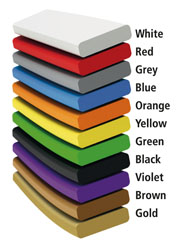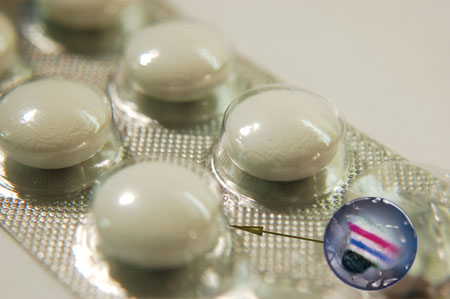Several German pharmaceutical industry and pharmacists associations are currently involved in a pilot to assess a counterfeit drug protection system. However, Rolf Simons, 3S Simons Security Systems, argues that the new system as it stands is not foolproof enough.
In Germany, there are reports about fake drugs that primarily refer to illegal Internet suppliers located outside the European Union (EU). By contrast, the distribution of drugs via pharmacies and officially registered mail-order pharmacies is deemed to be safe. However, given the international interdependencies regarding the movement of medicinal products, there is still a risk of fake drugs getting into the legal supply chain.
To combat falsified medicines, the EU Parliament adopted the Falsified Medicines Directive in 2011. The directive states that packaging of medicinal products has to be marked with a safety feature that will verify the authenticity of the medicinal product and single packages. In Germany, pharmaceutical manufacturers, pharmaceutical wholesalers and pharmacists are currently testing a security system called SecurPharm. EU member states have to provide the EU Commission with details of their specific national systems by July 2013. In this context, SecurPharm could be used as the reference model.
Currently the SecurPharm initiative relies solely on the data matrix code to secure drug packaging. Although the code provides new route- and process-tracking options, it is not counterfeit-proof, argues Rolf Simons, Managing Director of 3S Simons Security Systems, a producer of counterfeit protection labelling systems. Simons warns that false data matrix codes can easily be printed on packages of fake drugs using an ink-jet printer.

The code consists of between four and 10 different colour coatings that are layered on top of each other using a sandwich method. The selection of colours and the arrangement of the layers form the unique code for each company. This technique allows the formation of 4.35 billion different colour codes. If two or more colour codes are combined, the number of possible codes is practically infinite
He says it is doubtful whether SecurPharm will actually provide the required high level of protection against counterfeit drugs since the data matrix code is not forgery-proof. For instance, because counterfeit data matrix codes can be printed on packages of fake drugs using an ink-jet printer, pharmacists would not be able to identify these drugs as counterfeit in cases where the serial number has not yet been queried in the database or has been entered as sold. They could then sell the fake product to the patient. The system would reject the original in a subsequent query and would identify it as a counterfeit drug because the product status has been set to ‘sold’.
Simons believes that to ensure the health and life of patients, SecurPharm should be combined with a real anti-forgery system: ‘This is the only way to make sure that counterfeit drugs are not distributed to German pharmacies via the traditional pharma supply channels.
‘Given the risks that fake drugs pose, it is important that consumers are able to identify any medicine as original. This would strengthen the mutual trust between manufacturers, distributors and customers.’
Combining traceability and counterfeit protection
Simons believes technology such as the counterfeit protection system Micro colour codes, provided by 3S Simons Security Systems, can protect both drug packaging and data matrix codes. The colour code would be stored to SecurPharm’s database of manufacturers or pharmacists and thus would allow tracking of a drug’s production and supply chain – from the manufacturer all the way to the pharmacist. Each manufacturer is provided with an individual colour code, which ensures unambiguous allocation of the different drugs. The micro colour codes applied to the drug packaging are invisible to the naked eye; however, they are detectable under a simple microscope. This is possible using the counterfeit protection system SECUTAG offered by 3S Simons Security Systems.

With SECUPACK primary and secondary packaging from all industries are labelled as originals, for example, folded boxes, tubes, cans, vials, blisters and closures made of different materials
The micro colour code technology, which according to Simons has been counterfeit-proof for more than 15 years, unambiguously identifies products as originals and is accepted as evidence by international courts.
This method allows pharmacy staff to identify the drugs, including packaging, and the data matrix codes as originals. First, the data matrix code is read during the verification process. Then, the micro colour code is checked. If it conforms, the authenticity of the drug and the data matrix code are proven.
Unless production and supply chains are based on seamless protection systems ensuring traceability and counterfeit protection, consumers cannot be sure that pharmacists have given them the bona fide drug
Unless production and supply chains are based on seamless protection systems ensuring traceability (data matrix code) and counterfeit protection (micro colour code), consumers cannot be sure that pharmacists have given them the bona fide drug.
Such a protection strategy will not only reduce control costs along the production and supply chain, but will also strengthen the image of pharmaceutical companies as guarantors of high quality, maintains Simons.
He says this system can be easily communicated to the public and it enables consumers to identify whether they have bought the original product or not. If they do not check the product’s authenticity, they assume a share of the responsibility – something that may be relevant when it comes to unjustified product liability and damage claims, says Simons.




